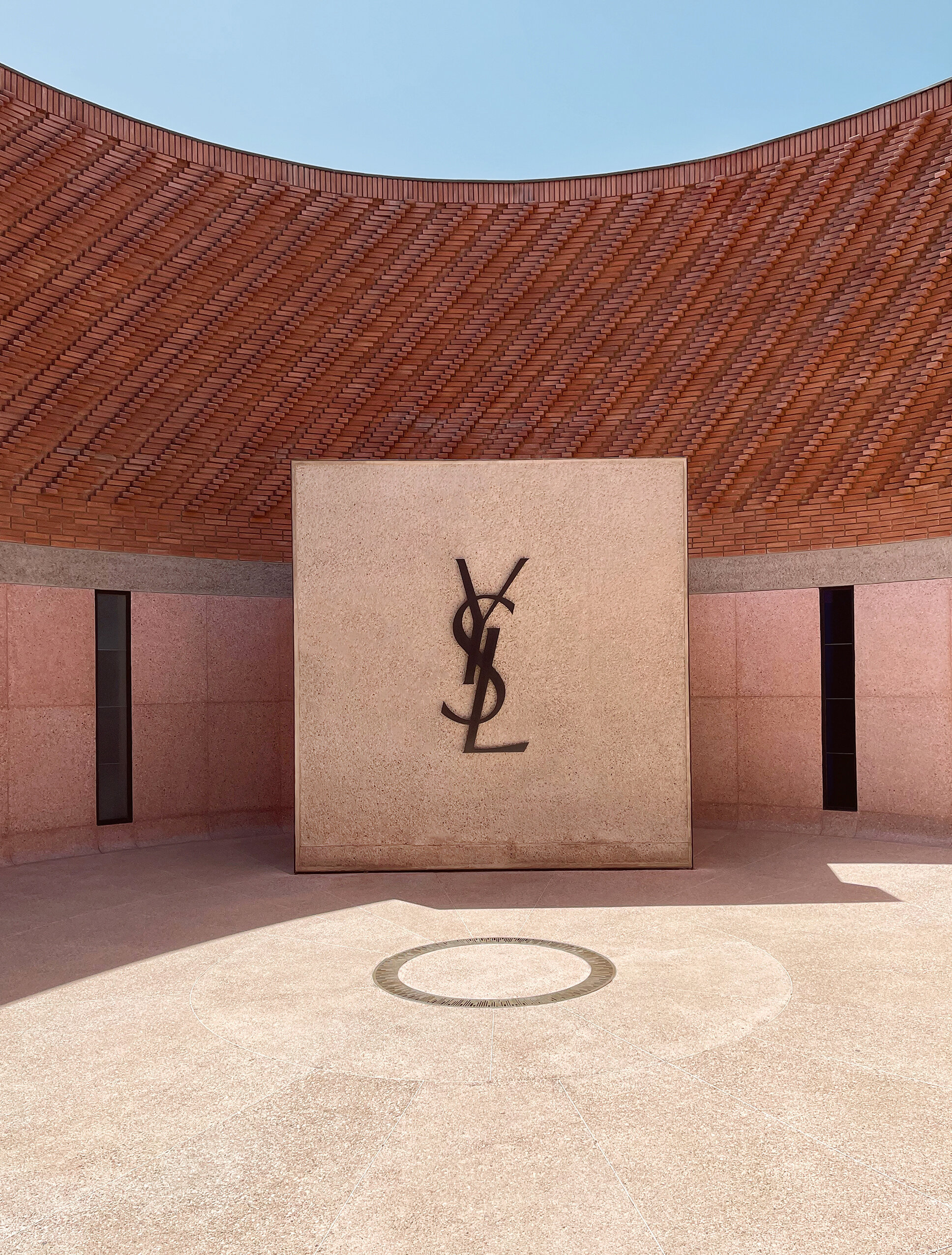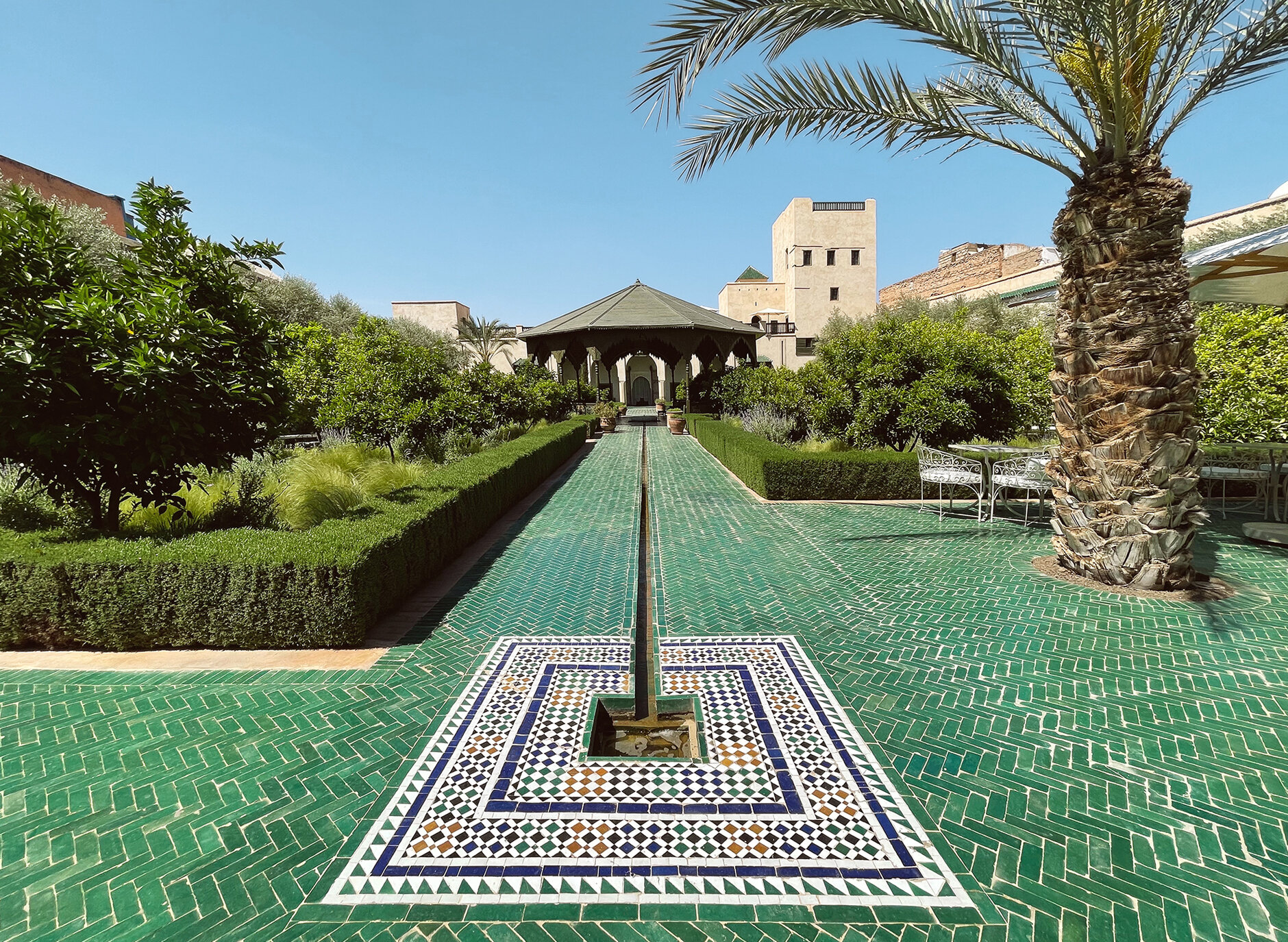Explore Marrakesh
Regardless of whether you’re travelling for business or pleasure, it’s not always easy to fit everything you want into your daily agenda. The great thing about Marrakesh is that it’s relatively small for a city, and you can really get a feel for it in only a few days. But if you have more time to spare, It was an amazing feeling to be able to navigate the medina without the use of a map! As I went on my daily walks, I began to see familiar faces and people started to recognize me in the markets and say hello. This was rewarding for me because while sourcing authentic, high-quality suppliers is my number one priority on the ground, it was nice to make these connections and enjoy the sights.
Dar Si Said
Since Tajmi is head-over-heels for textiles, my first stop was the carpet museum Dar Si Said. The building itself is a stunning old riad, housing antique tapestries and Berber costumes. Rooms are dedicated to the process of their weaving techniques, and it’s amazing to see how contemporary the rugs appear, despite being woven centuries ago.
Jardin Secret
The second stop was into the Jardin Secret, which was a tranquil break from the hectic streets. It is one of the largest and oldest riads in the city, which has undergone an extensive rebuild to get it back to this glorious state. This riad is also known for its aqueduct system, originally built in the 11th century. Called the khettara, this ground drainage tunnel distributed fresh water from the Atlas Mountains all the way into the city, specifically to the mosques. (In Muslim culture, water is considered to be a symbol of life and a sign of God’s existence.) It also carried water to the hammams and, in some cases, to great houses such as Le Jardin Secret. In those days, having your own water supply was a great privilege.
Jardin Majorelle
Finally, I explored the colourful Jardin Majorelle. In 1924, the French artist Jacques Majorelle built this exotic garden along with an artist studio on the property, painting everything in what he later trademarked as “Majorelle Blue,” a colour that has now become infamous in Marrakesh. Within the garden is also a small Berber Museum, which offers a look into some of their ancient traditions alongside a number of their decorative craftwork. Extremely skilled with more than textiles, their ornate jewelry, metalwork, costumes and of course, their weaving, is also on display.
In 1980, Pierre Bergé and Yves Saint Laurent acquired the Jardin Majorelle, rescuing it from the hands of property developers. Like so many, Marrakesh had seduced them with its vibrancy, so they decided to relocate and restore both the garden and the studio space. Yves once stated “the boldness seen since then in my work, I owe to this country, to its forceful harmonies, to its audacious combinations, to the fervour of its creativity.” I felt I could relate to these words after spending so much time in this environment. After his death in 2008, Pierre donated the property, which led to the establishment of the Foundation Jardin Majorelle. In 2011, Studio KO designed a stunning modern museum next to the property, entirely dedicated to YSL and his life's work, tied into the inspiration he drew from Marrakesh.





Back in the medina, the sound of motos whizzing by and cars honking was overwhelming as I attempted to cross the narrow roads, but it was really all part of the fun.
The following days were spent getting lost in the markets, known as souks or bazaars. I’d catch the strong scent of fresh mint as I passed merchant stands piled high with spices, walls of shoes, tea sets, and shiny silver objects. I quickly learned that you can find the same products in multiple stalls, and that negotiating the price is simply part of the culture.
I also explored the medina, including the Old Jewish Quarter, a wall district called the Mellah.
It has lost most of its Old World charm, but you will still find some ancient storefronts, and can stop in at the Lazama Synagogue, originally built in 1492.
From there, visitors can wander right into the famously large Jemaa el-Fnaa square, but be aware that things will get intense! Locals selling items often follow you, snake charmers will be charmin’, and cats wander at your feet as the sun beats down on you in the open air square. If you’re a big fan of fresh pressed orange juice, this is definitely your spot.
Alcohol, on the other hand, is not as easily accessible (get ready to drink a ton of mint tea), but those craving
a cocktail or three can head to a nearby hotel, as they cater to tourists. My favourite rooftop stop became El Fenn Hotel, which is just around the corner from Jemma el-Fnaa square.
Interesting fact: Although alcohol is haraam (or forbidden) in Muslim culture, Morocco produces its own alcoholic products. Casablanca beer can be found, as well as tasty wines that are both grown and made in Morocco.
Even after spending weeks in this small city, there seem to be endless gems to discover and explore. I can’t wait to return to Marrakesh and share my next experiences (and finds) with you.
Atlas Collections
Discover our collection of curated items from the Atlas Mountains. Each piece has been hand selected in Morocco by Tajmi for you to enjoy in your home.





